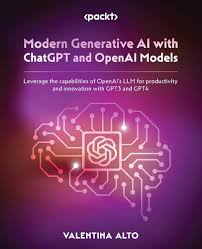White Paper -Modern Generative AI: A Deep Dive into ChatGPT and OpenAI Models and Hugging Face
Abstract
Generative AI has emerged as a transformative technology, revolutionizing various industries. This white paper delves into the world of modern generative AI, with a particular focus on ChatGPT and OpenAI models. We explore the underlying principles, capabilities, and real-world applications of these powerful tools. Additionally, we discuss the ethical implications and future directions of generative AI.
1. Understanding Generative AI
Generative AI is a subfield of artificial intelligence that focuses on creating new content, such as text, images, and music. It leverages advanced machine learning techniques, particularly deep learning, to generate realistic and creative outputs.
2. The Rise of ChatGPT
ChatGPT, developed by OpenAI, is a state-of-the-art language model capable of generating human-quality text. It can engage in conversations, translate languages, write different kinds of creative content, and answer your questions in an informative way.
Key Capabilities of ChatGPT:
- Text Generation: Creating articles, poems, scripts, and code.
- Language Translation: Translating text between languages accurately.
- Summarization: Condensing long texts into shorter summaries.
- Question Answering: Providing informative and comprehensive answers.
- Creative Writing: Writing stories, scripts, and poems.
3. OpenAI Models: A Versatile Toolkit
OpenAI offers a suite of powerful models, including GPT-3 and DALL-E 2, that can be used for various generative AI tasks.
GPT-3:
- A massive language model capable of generating human-quality text.
- Applications: Content creation, code generation, and language translation.
DALL-E 2:
- A text-to-image model that generates realistic images from textual descriptions.
- Applications: Design, advertising, and creative arts.
4. Real-World Applications of Generative AI
- Content Creation: Generating articles, blog posts, and marketing copy.
- Customer Service: Providing automated customer support through chatbots.
- Education: Creating personalized learning experiences and tutoring systems.
- Healthcare: Analyzing medical data and drug discovery.
- Creative Industries: Generating music, art, and design.
5. Ethical Considerations and Future Directions
While generative AI offers immense potential, it also raises ethical concerns.
- Bias and Fairness: Ensuring that AI models are unbiased and fair.
- Misinformation and Disinformation: Preventing the misuse of AI for generating false information.
- Job Displacement: Addressing potential job losses due to automation.
The future of generative AI is promising, with ongoing research and development leading to even more advanced capabilities. We can expect to see further integration of generative AI into various industries, transforming the way we work and live.
References
- OpenAI: https://openai.com/
- Papers with Code: https://paperswithcode.com/
By understanding the principles, capabilities, and ethical considerations of generative AI, we can harness its power to create innovative solutions and address global challenges. contact ias-research.com for details.



